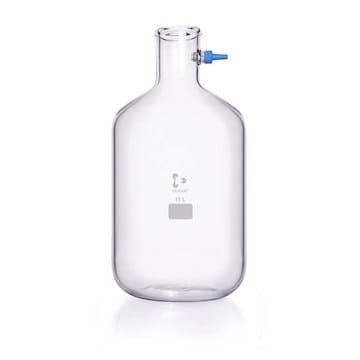424641
Kohlenstoffdisulfid
ReagentPlus®, purified by redistillation, ≥99.9%
About This Item
Empfohlene Produkte
Dampfdichte
2.67 (vs air)
Dampfdruck
5.83 psi
Produktlinie
ReagentPlus®
Assay
≥99.9%
Form
liquid
Selbstzündungstemp.
212 °F
Aufgereinigt durch
redistillation
Expl.-Gr.
50 %
Verunreinigungen
≤0.03% (water)
≤1.5 ppm hydrogen sulfide
≤2.5 ppm sulfur dioxide
<100 ppb benzene (No single impurity > 100 ppb, measured as benzene)
<500 ppb total hydrocarbon content
Farbe
APHA: ≤10
Brechungsindex
n20/D 1.627 (lit.)
bp
46 °C (lit.)
mp (Schmelzpunkt)
−112-−111 °C (lit.)
Löslichkeit
alcohol: miscible(lit.)
benzene: miscible(lit.)
Dichte
1.266 g/mL at 25 °C (lit.)
SMILES String
S=C=S
InChI
1S/CS2/c2-1-3
InChIKey
QGJOPFRUJISHPQ-UHFFFAOYSA-N
Suchen Sie nach ähnlichen Produkten? Aufrufen Leitfaden zum Produktvergleich
Allgemeine Beschreibung
Anwendung
Rechtliche Hinweise
Signalwort
Danger
Gefahreneinstufungen
Acute Tox. 4 Inhalation - Eye Irrit. 2 - Flam. Liq. 2 - Repr. 2 - Skin Irrit. 2 - STOT RE 1
Zielorgane
Peripheral nervous system,Central nervous system,Cardio-vascular system,Eyes
Lagerklassenschlüssel
3 - Flammable liquids
WGK
WGK 2
Flammpunkt (°F)
-22.0 °F - closed cup
Flammpunkt (°C)
-30 °C - closed cup
Analysenzertifikate (COA)
Suchen Sie nach Analysenzertifikate (COA), indem Sie die Lot-/Chargennummer des Produkts eingeben. Lot- und Chargennummern sind auf dem Produktetikett hinter den Wörtern ‘Lot’ oder ‘Batch’ (Lot oder Charge) zu finden.
Besitzen Sie dieses Produkt bereits?
In der Dokumentenbibliothek finden Sie die Dokumentation zu den Produkten, die Sie kürzlich erworben haben.
Unser Team von Wissenschaftlern verfügt über Erfahrung in allen Forschungsbereichen einschließlich Life Science, Materialwissenschaften, chemischer Synthese, Chromatographie, Analytik und vielen mehr..
Setzen Sie sich mit dem technischen Dienst in Verbindung.






